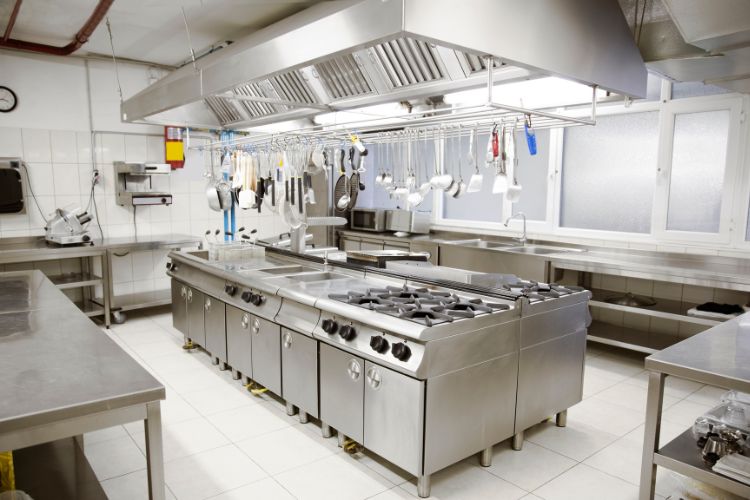
Guide to Buying Your Industrial Kitchen
Share
Commercial ranges are the heart of any kitchen, providing the power and versatility needed to efficiently cook multiple menu items. With a variety of options available, choosing the best commercial range for your business can seem like a daunting task. Key factors to consider when choosing a commercial range include: The size and layout of the kitchen , the type of cuisine served, and the volume of food to be prepared. We'll break down the different types of commercial kitchens available so you can find the perfect range to suit your cooking needs.
Range of restaurants
Restaurant kitchens, also known as Medium-duty ranges are freestanding units that offer a cost-effective solution for commercial kitchens. These ranges typically have a gas connection at the rear, making them easy to install in various kitchen layouts.
While these stoves have a lighter construction than heavy-duty stoves, they are still designed to withstand the demands of a busy kitchen environment. burners provide plenty of BTUs for most cooking tasks cooking, but they will take longer to heat and cook food than a heavy-duty stove. They are also more affordable in terms of initial and energy costs.
- Energy type: Gas
- Number of burners: 4 - 6
- Best for: Most commercial kitchens, food stands, and churches
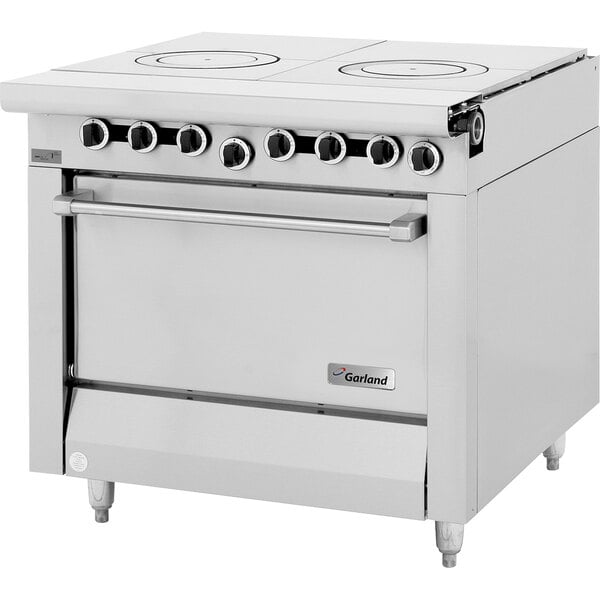
Heavy-duty stoves
Heavy-duty ranges are designed for high-volume cooking operations that will use their range virtually all day to serve a large number of people. These ranges operate with higher BTU ratings for the burner and oven, offering faster cooking times and greater efficiency. They come with various top configurations and burner options to suit different cooking needs. While heavy-duty ranges may have a higher price tag compared to restaurant ranges, their advanced features and sturdy construction make them a worthwhile investment for high-volume kitchens.
Heavy-duty ranges are constructed with thicker gauges of metal and more heavily welded components, ensuring long-term durability in demanding cooking environments. They can be used as standalone units but are typically designed to be grouped with other ranges or equipment, allowing for a customized cooking configuration. The gas connection is often located on the side or rear, providing flexibility for various cooking configurations.
- Energy type: Gas
- Number of burners: 1 - 12
- Best for: Cafeterias, hospitals and high-volume restaurants
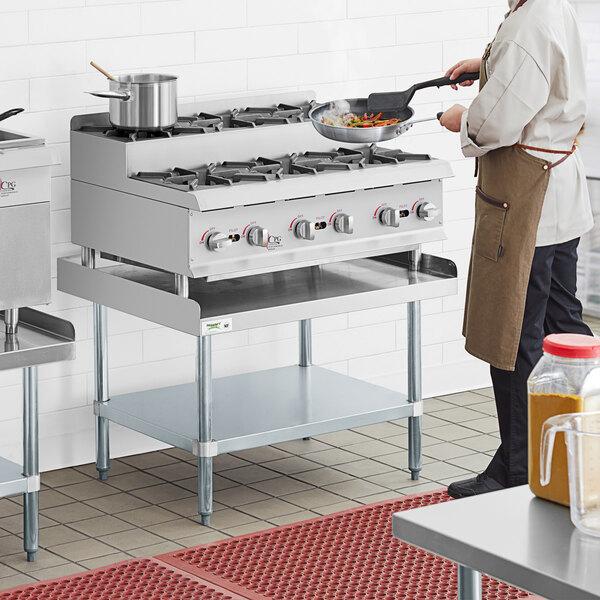
Countertop gas stove
Countertop gas stoves They are compact and versatile kitchen appliances that can be placed on existing countertops or work surfaces. They're perfect for small kitchens, food trucks, or establishments with limited space.
Countertop gas ranges come in standard-duty and heavy-duty models, accommodating different cooking intensity levels. Some gas models feature a tiered design that provides additional cooking space, allowing more dishes to be prepared simultaneously. Many are field convertible, allowing operators to use natural gas or liquid propane.
- Energy type: Gas
- Number of burners: 1 - 10
- Best for: Food stalls, food trucks, and kiosks
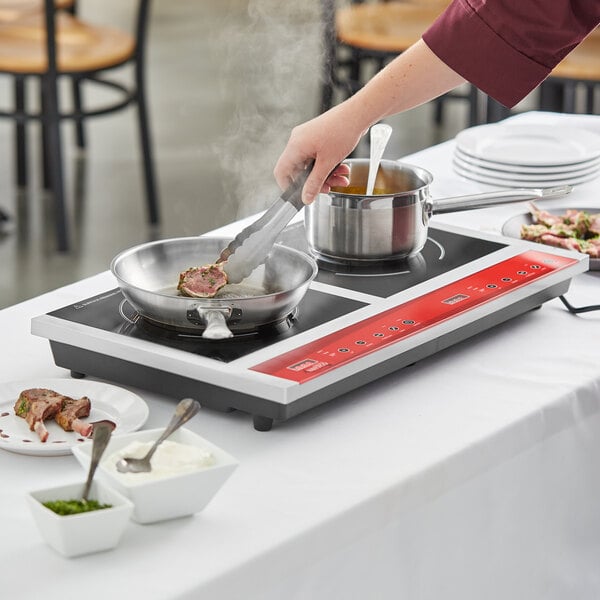
Range of induction hobs
Induction hob ranges They offer a modern and efficient cooking solution. Some induction models can be used as a built-in or countertop unit, offering installation flexibility. Portable and lightweight, they are ideal for front-of-house and display kitchen operations such as catered events, breakfast bars, or buffets.
An induction cooktop is safer than a gas stovetop because there's no open flame. This means less ambient heat in your kitchen and, more importantly, no open flames or flammable fuels that could be a potential safety hazard. Many models have built-in safety features, such as an automatic standby mode once the cookware is removed. Induction technology It also ensures rapid heat-up and precise temperature control, allowing chefs to adjust heat levels quickly and accurately and reduce cooking times.
- Energy type: Electric
- Number of burners: 1 - 4
- Best for: Catering companies, off-site cooking events, and hotels
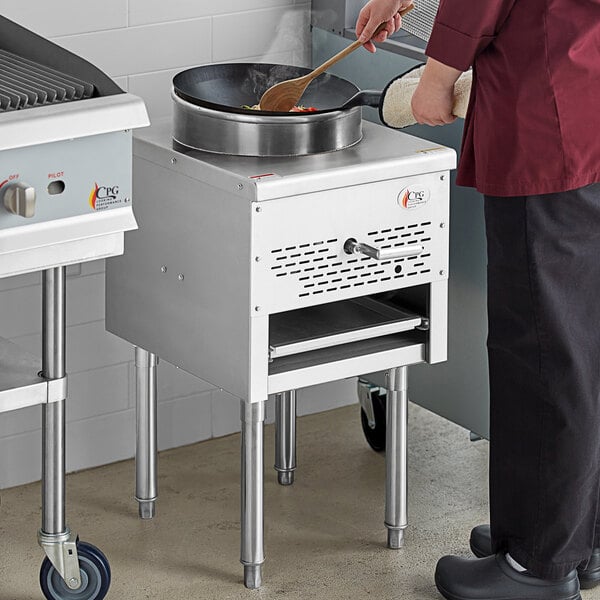
Wok Range
A wok range It is designed for high-heat cooking techniques such as sautéing, searing, and stir-frying. It features high BTU burners that heat up quickly and a raised ring that supports round-bottom woks , allowing for quick and efficient cooking.
Restaurants specializing in Asian cuisine or dishes requiring intense heat will benefit from having a wok stove in their kitchen. They're a great option if you have limited kitchen space and a menu that relies heavily on stir-frying vegetables and meat.
- Energy type: Gas
- Number of burners: 1 - 4
- Best for: Japanese steakhouse, Asian restaurant or catering company
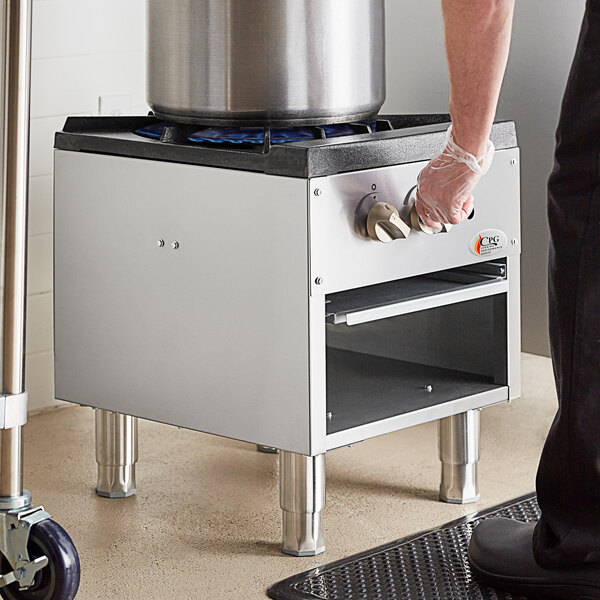
Range of stock pots
As the name suggests, the ranges of pots They are specifically designed for heating large pots filled with soups, stews, broths, and sauces. Catering businesses, cafes, and restaurants that frequently cook in bulk will find a range of pots indispensable.
These stoves typically feature multiple burners or a single large burner with a high BTU output to accommodate the size and weight of the pots. They are relatively compact units, with a low height that reduces the risk of spills and makes lifting large, heavy pots easier. This helps improve worker comfort and safety in a crowded kitchen.
- Energy type: Gas
- Number of burners: 1 - 4
- Best for: Catering companies, banquet halls and cafes
Commercial ranges are available in both gas and electric models. Each power source has its own advantages and disadvantages. Consider factors such as cooking style, energy costs, safety considerations, and local regulations to determine which power source is best suited for your kitchen.
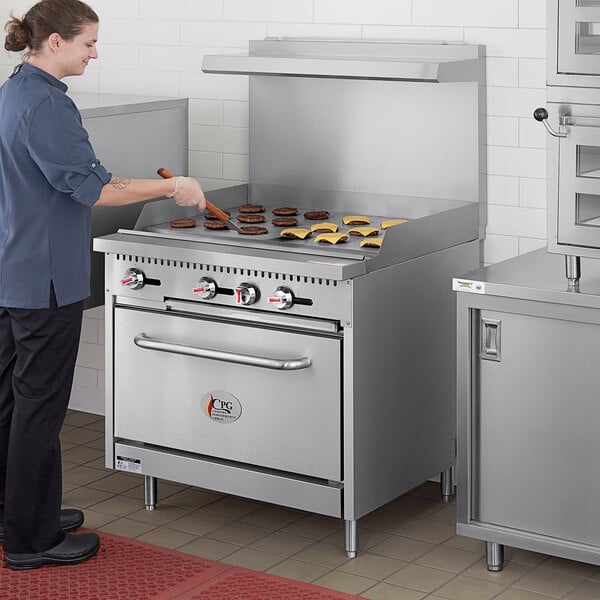
Commercial gas stove
Commercial gas stoves Gas stoves are the most popular option, favored by many chefs and cooks for their precise control over heat levels. The open flame allows for quick adjustments and even heat distribution, making them ideal for cooking techniques that require rapid temperature changes. Gas stoves require a gas connection and professional installation, which can increase their initial costs.
- Precise temperature control and fast heat-up times
- Most cost-effective option
- Ideal for large-volume kitchens that rely heavily on their range
- It produces a lot of ambient heat in your kitchen
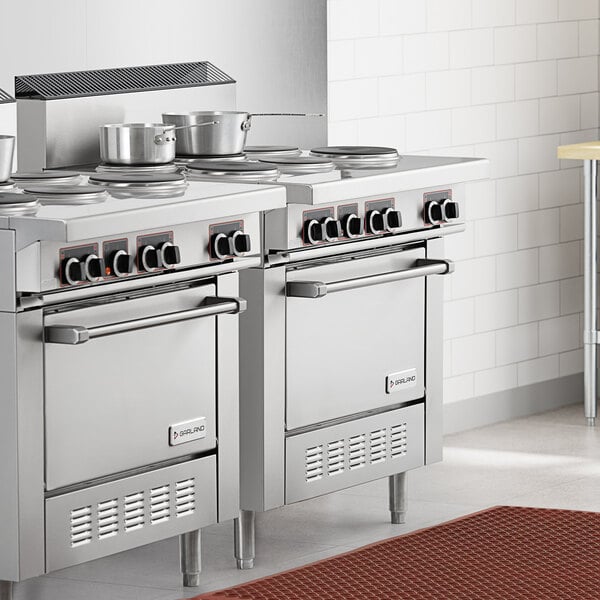
Commercial electric range
While they are more expensive to purchase in advance, commercial electric stoves They are valued for their energy efficiency, ease of maintenance, and safety. Their biggest drawback is that they don't heat up as quickly as gas models, making them better suited for smaller kitchens.
- More energy efficient
- Produce less ambient heat in the kitchen
- The stove surface is easy to clean
- Less precise temperature control
- Don't get so hot so fast
The most common range sizes are 24", 48", and 60" wide, but models are available from 12" to 72", usually in 12" or 18" increments. Restaurant ranges often measure between 24" and 72", while heavy-duty modular versions will measure between 32" and 36" per section.
When determining the best stove width for your kitchen, consider the following:
Hood space
Most Health/safety codes require that the hood extends at least 6" beyond each piece of equipment you place underneath. For example, if you have a 48" wide hood, the widest range you could put underneath would be a 36" model. It's always best to check with local regulators to be sure.
Menu and Application
If you're just serving breakfast, do you need open burners, or would a griddle or griddle be better? For example, if you serve a wider variety of foods or different meals, consider how much burner space you might need versus the griddle space.
- Most range manufacturers offer griddle options in 12" width increments, so you can tailor the exact configuration of the griddle space in front of the burners to suit your cooking needs.
- Some sizes, such as 24" and 48", often feature space-saving ovens.
Consider the type of cooking you'll be doing in your kitchen when selecting the range configuration for your commercial range. Each option offers unique benefits and suits different cooking styles and menu items. Choose a range configuration that aligns with your menu requirements and kitchen workflow to maximize the efficiency and performance of your commercial range.
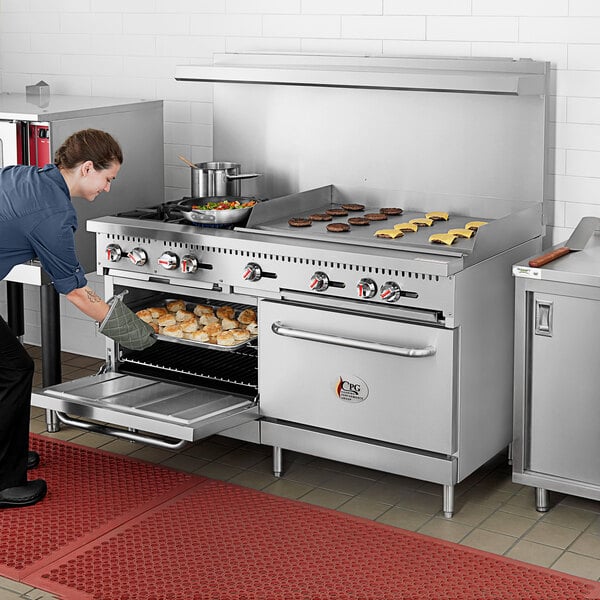
- Open burner: Open burners are the most common and versatile stovetop configuration. They produce an open flame to provide direct, controlled heat and feature cast iron or stainless steel grates to support the pot or pan over the burner.
- Iron cover: Stoves equipped with a griddle offer a flat cooking surface that's perfect for preparing foods like pancakes, eggs, burgers, and grilled sandwiches. Griddles provide consistent heat distribution and are excellent for achieving even cooking results. They're a popular choice in breakfast and brunch establishments.
- Hot Top: A hot lid, or even a thermal lid, consists of a steel plate with a higher heat input than open burners. This configuration is ideal for cooking delicate items that require precise temperature control, such as sauces, custards, and chocolates.
- French plate: French burners are the most commonly used on electric stoves. The round metal plates fit over the top of the burner to provide more even heat distribution and make cleaning easier.
- Iron: The top of a griddle is very similar in appearance to a griddle. The center of the plate is hotter than the perimeter, allowing it to sear in the middle and finish/hold food at a lower temperature around the edges.
If you opt for a restaurant or heavy-duty range, the model will likely include more than just the burners. Ranges will often come with ovens, storage cabinets, and other types of bases that expand their versatility. With so many options available, it's up to you to determine which one best suits your menu.

- Standard oven: The most popular option, standard ovens are at least 26" wide and will hold full-size pans in any direction.
- Convection oven: These ovens use internal fans to move hot air around the cavity and cook food more quickly and evenly. These models are more expensive than standard ovens.
- Space-saving oven: Ideal for small kitchens, the space-saving ovens measure approximately 20" wide by 26" deep and can accommodate full-size pans lengthwise.
- Storage base: These are simply an open cavity beneath the stove top, rather than an oven, and provide space to keep pots, pans, and other cooking utensils close at hand. Storage bases can range in size from 12" to 36" and can take up the entire base or share space with an oven or refrigerator.
- Refrigerated Chef Base: A refrigerated chef's base keeps cold ingredients close and ready to go at a moment's notice.

